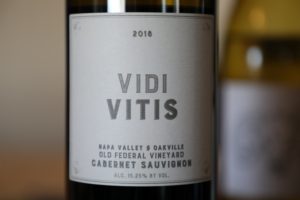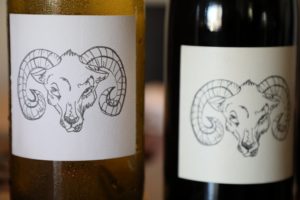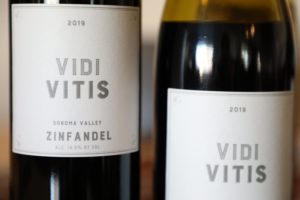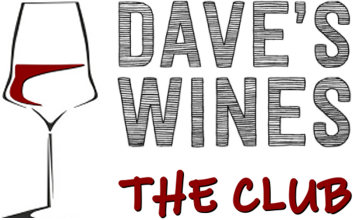
 Forgotten Union Wines was founded by winemaker and viticulturist Benjamin Leachman with his first commercial bottling in 2015, a Cabernet Sauvignon from the valley floor in the Stags Leap District. To Benjamin, winemaking is a craft not an art, an ethos that embraces science but also all the tools one needs to bring wine to market from the vineyard to the cellar. Benjamin works with premium vineyard sites and equates his winemaking to that of a sushi chef, using the best ingredients, letting the site and variety do the heavy lifting.
Forgotten Union Wines was founded by winemaker and viticulturist Benjamin Leachman with his first commercial bottling in 2015, a Cabernet Sauvignon from the valley floor in the Stags Leap District. To Benjamin, winemaking is a craft not an art, an ethos that embraces science but also all the tools one needs to bring wine to market from the vineyard to the cellar. Benjamin works with premium vineyard sites and equates his winemaking to that of a sushi chef, using the best ingredients, letting the site and variety do the heavy lifting.
He graduated with a degree in biochemistry from Occidental College in Los Angeles. In 2004 he began working for what was the largest estate Chardonnay producer in California, R.H. Phillips. The winery was fermenting approximately 150 individual lots in both barrel and tank and producing 500,000 cases of an estate Chardonnay called Toasted Head. Benjamin worked in the lab; he was exposed to numerous wine styles and the logistics of a large production. And he used this opportunity to ask a lot of questions.
Eventually he realized it would be a good idea to return to school and pursue a wine related degree. So he enrolled at UC Davis and graduated with a BS in Viticulture & Enology and an MS in Horticulture & Agriculture, with an emphasis on viticulture. While at UC Davis he worked with UC Davis grapevine geneticist Dr. Andrew Walker using at the time, the new teaching winery to conduct a number of micro ferments on Pierces Disease resistant grape varieties including including Lenoir and Catawba. Walker developed a number of grape varieties resistant to Pierce’s Disease, all named with a ‘walking’ theme as an homage to his last name. A couple of these include Caminante Blanc, Camminare Noir and Pasante Noir. Several of these varieties grow in Napa Valley and have already been bottled commercially by local wineries including White Hall Lane and LOLA.
Benjamin’s first winemaking job in Napa Valley was at CHANDON California assisting with winemaking for their 2008 harvest. He started working at Seavey Winery as an intern in 2011 and quickly took on significant responsibilities including becoming the vineyard manager and also assistant winemaker. From there he was the Associate Winemaker at Checkerboard Vineyards. He is currently the Director of Viticulture for Walsh Vineyards Management.
Nomenclature
Forgotten Union refers to the historic Union City part of the northern Napa city limits where Benjamin lives; this is where he originally started the brand. It also is a union between viticulture and winemaking – a union that bridges the disconnect sometimes found between both of these integral parts of the business.
Two brands are bottled under Forgotten Union; Sheepish referring to wines from Carneros; for reference Carneros in Spanish means ram. These wines showcase the full ripeness of Carneros grown varieties. The ram on the front label was designed by creative, Scott Nancarrow who Benjamin met while studying at Occidental College.
The Latin expression, “Veni, vidi, vici”, meaning, “I came, I saw, I conquered” is commonly attributed to Julius Caesar. When Benjamin presented this line as a possible quote on his wine label, friends told him people would have a hard time pronouncing it and restaurants would never buy a wine with it on the label. So he shortened it to Vidi Vitis, loosely translating to, “I saw a grape”. Joe Borenson of Napa based, Dust Cloud Designs, created the simple but elegant looking Vidi Vitis labels. Borenson has also designed labels for other Napa Valley wineries including Ackerman, MC4, Shypoke and Turnbull.
They say it takes at least 10 years to build a wine brand to where it is economically sustainable. It is even more difficult to do when one’s production is as small as this – typically 200 cases a year. At this level, it is word of mouth that sells wine, one referral at a time. It takes a special consumer who seeks out a brand not only for the quality of the wines but also for the pedigree and character of the brand and related stories. This is one producer that definitely deserves to be on your radar.
Select wines
 The 2023 Sheepish Chardonnay, Firetree Vineyard is deep gold in color; the highly attractive bouquet offers scents of peach, dried hay, yellow nectarine and some tropical influences including of pineapple, papaya and mango. And as it opens it reveals aromas of honeycomb, honeysuckle and vanilla. The fruit is clearly the star of the show here; according to Benjamin, the supporting oak is like a picture frame, complementary but never dominating. And this is especially true with his Chardonnay. This is a riper showing but the acidity plays well with the ripeness. Not linear. Balanced, bright and intensely flavored. On the palate there are flavors of mandarin orange, papaya, apricot, yellow nectarine and green apple. The mouth feel is rounded, fleshy and supple and almost saline in character. Has weight without being heavy. The finish is long, flavorful and ripe with the oak offering a light toasted character. The focus here is on a balanced, fresh and non buttery Chardonnay while highlighting the complementary characteristics of oak. The wine was fermented using indigenous yeasts with 50% in stainless steel (no ML) and 50% in neutral French oak barrels (full ML). It was aged sur-lie for 8 months in French oak barrels of which 50% were new and bottled unfined, unfiltered and without cold stabilization. As a result, bottles contain fine-lees and tartrates.
The 2023 Sheepish Chardonnay, Firetree Vineyard is deep gold in color; the highly attractive bouquet offers scents of peach, dried hay, yellow nectarine and some tropical influences including of pineapple, papaya and mango. And as it opens it reveals aromas of honeycomb, honeysuckle and vanilla. The fruit is clearly the star of the show here; according to Benjamin, the supporting oak is like a picture frame, complementary but never dominating. And this is especially true with his Chardonnay. This is a riper showing but the acidity plays well with the ripeness. Not linear. Balanced, bright and intensely flavored. On the palate there are flavors of mandarin orange, papaya, apricot, yellow nectarine and green apple. The mouth feel is rounded, fleshy and supple and almost saline in character. Has weight without being heavy. The finish is long, flavorful and ripe with the oak offering a light toasted character. The focus here is on a balanced, fresh and non buttery Chardonnay while highlighting the complementary characteristics of oak. The wine was fermented using indigenous yeasts with 50% in stainless steel (no ML) and 50% in neutral French oak barrels (full ML). It was aged sur-lie for 8 months in French oak barrels of which 50% were new and bottled unfined, unfiltered and without cold stabilization. As a result, bottles contain fine-lees and tartrates.
The first wine Forgotten Union produced from Firetree Vineyard was in 2019 when it was under the ownership of Diane and Ron Disney, then proprietors of Silverado Vineyard. During the logistics of harvest, like other winemakers, Benjamin often is presented opportunities to make wine from small amounts of grapes. For example in 2019, Chardonnay from the Firetree Vineyard was under a contract with another winery; part of the contract stipulated the grapes would be harvested only if they were under a certain sugar/brix level. Some of the grapes ultimately were riper than the agreed upon brix level so these were offered to Benjamin. And their ripeness perfectly fit the profile of his Sheepish brand.
The 2018 Sheepish Pinot Noir, Carneros Napa Valley. The grapes for this wine are from The Shop Vineyard, a site owned by Walsh Vineyard Management. All its farming is overseen by Benjamin. The wine was crafted from Pinot Noir clone 459, a clone that features large clusters. Winemaker Mark Davis, the proprietor of Cobden Wini wines provided fermentation and cellaring advice for this particular wine. It is is medium ruby in color; the bouquet immediately offers a diversity of spices including white pepper and sage, along with fruited aromas of raspberry, cherry cola, plums and a lighter sweet baking spice note. On the palate there are flavors of raspberry, strawberry, red licorice, cherry and Santa Rosa plum. The palate is remarkably smooth and supple with the fine-grained tannins seamlessly integrated into the finish. Lingers with a note of white pepper and a light herbal character. As the label reads, “a ripe 2018”; it is 15% alcohol but has no perception of ‘warmth’. For reference, we tasted this 6 years post vintage. This wine was aged for 19 months in French oak barrels of which 50% were new.
The 2019 Vidi Vitis Zinfandel is from a vineyard located off of lower Cavedale Road in Sonoma Valley. This wine is medium to dark ruby; the bouquet offers scents of raspberry, strawberry, cherry, dried rose petals, with some attractive spices showing as the wine evolves including cardamom, clove and white pepper. The palate delivers flavors of cherry, raspberry, strawberry and white pepper. Bright and balanced, this wine is showing in a sweet spot 5 years post vintage. The tannins are lightly grainy but well integrated into the finish at this age. This wine showcases everything that is likeable about this variety – its inherent typicity, balance, saddling safely on the side of being ripe but not over ripe and no jammy or sweet characteristics. As a result, it is a very food friendly bottling. 125 cases of this were produced. The grapes were harvested at 24.9 brix but by time it was in tank the sugars shot up to 27 brix. One winemaker told him to maintain cold temperatures resulting in slow fermentations; he used Assmanshausen(AMH), a yeast often used to ferment Pinot Noir. This wine was aged for 20 months in French oak barrels of which 50% were new.
UC Davis owns two separate vineyards in Oakville, collectively referred to as Oakville Station. The north property is the 20-acre Old Federal Vineyard (a site rooted in research and experimentation) and a 20-acre property to the south, simply called South Station. In 2017 Benjamin was walking Old Federal Vineyard and started talking to that properties’ vineyard manager. Half joking, Benjamin mentioned to him that if he had any extra grapes he would be interested in buying them. He was grateful when the vineyard manager later called him and offered grapes from blocks 1 and two from this vineyard.
The 2018 Vidi Vitis Old Federal Vineyard Cabernet Sauvignon (clone 8, 100% varietal) is deep ruby and opaque in color; the bouquet is diverse, offering scents of tobacco spice, old leather, library book, rusting iron, dark plum, dark cherry and dark plum. The bouquet is distinctive enough that we would like to think we could pick it out of a lineup in a blind tasting. On the palate there are flavors of dark cherry, blackberry, boysenberry, dark plum and boysenberry. It is bright, balanced and still fresh 6 years post vintage. The tannins are firmly gripping but don’t have any edgy characteristics; they linger with a dusty but not course grip on the extended finish. Its texture is what we love about more balanced Napa Valley Cabernet Sauvignons, felt, but never dominating. This wine was aged in 50% new French oak barrels including Taransaud and Darnajou. Benjamin is always judicious in the amount of new French oak used, especially thinking long term where influence from ‘over oaked’ wines often dominates as the fruit fades.
 The 2021 Vidi Vitis Old Federal Vineyard Cabernet Sauvignon is deep ruby and opaque with an amaranthine rim; the bouquet is a union of both fruit and barrel influences. These aromas include dark plum, blackberry, boysenberry and Pakistani mulberry along with dark cocoa powder. Ripe but simultaneously bright and fresh across the palate, there are flavors of blackberry, boysenberry, Persian mulberry, dark plum and black cherry. The grainy and gritty tannins persist with a dusty and chalky character, paralleled by the fruit and a light note of dried tobacco leaf on the extended finish. Lingers red-fruited and mouthwatering. This wine hits on all the pleasure points that serious Napa Valley wine enthusiasts gravitate towards and is one of the more balanced 2021 Napa Valley Cabernet Sauvignons we have tried. Highly worth seeking out. It was aged for 20 months in French oak barrels including Gamba, Darnajou and Taransaud of which 50% were new.
The 2021 Vidi Vitis Old Federal Vineyard Cabernet Sauvignon is deep ruby and opaque with an amaranthine rim; the bouquet is a union of both fruit and barrel influences. These aromas include dark plum, blackberry, boysenberry and Pakistani mulberry along with dark cocoa powder. Ripe but simultaneously bright and fresh across the palate, there are flavors of blackberry, boysenberry, Persian mulberry, dark plum and black cherry. The grainy and gritty tannins persist with a dusty and chalky character, paralleled by the fruit and a light note of dried tobacco leaf on the extended finish. Lingers red-fruited and mouthwatering. This wine hits on all the pleasure points that serious Napa Valley wine enthusiasts gravitate towards and is one of the more balanced 2021 Napa Valley Cabernet Sauvignons we have tried. Highly worth seeking out. It was aged for 20 months in French oak barrels including Gamba, Darnajou and Taransaud of which 50% were new.
The 2021 Vidi Vitis Old Federal Vineyard Cabernet Sauvignon Cabernet Franc was grown in block 11 on the north part of this site from clone 214. This wine is deep ruby and opaque with purple tinges on the rim; it is perfect union of both fruit with barrel influences a complementary character. The bouquet offers aromas of dark raspberry, Santa Rosa plum, cherry and dried rose petals. This is a fully ripe expression of the variety – no herbal characteristics here. And like the bouquet, the palate is also ripe including flavors of blackberry, dark raspberry, cherry and plum. This wine feels alive and expressive. The grainy, granular and chewy tannins persist in tandem with a red-fruited brightness. At this age, three years post vintage, it still needs more time in bottle for full integration. A light tartness lingers along with a dusty character. Tension is one word we wrote to describe its overall feel between texture, acidity and flavor. This is the first wine made from vines planted in 2016. Delicious, and clearly a crowd favorite Cabernet Franc. This wine was aged for 20 months in French oak of which 50% were new barrels from Darnajou and Taransaud.
Sometimes Benjamin has access to unique varieties. For example in 2019 he produced a wine from the Greek variety, Xinomavro that he had planted on 1/6th of an acre in Rutherford. He was planning on bottling this sooner but approval from the TTB for his label was taking too long. As a result this wine was aged for another year in barrel, for a total of 36 months. He referenced former Chimney Rock winemaker Doug Fletcher for cellar advice; Fletcher told him to add Syrah for color and age the wine in 100% new American oak barrels. He did both. The 2019 Vidi Vitis Rutherford, Napa Valley Xinomavro is light ruby in color; the ripe bouquet reveals aromas of chocolate, raspberry and a note of coconut. The palate offers flavors of stewed fruits, tomato, orange peel, dried mushrooms mocha, espresso and coffee grinds. The maderized and oxidized character is a direct result of the extra year in the new American oak barrels. Regardless, it is a rare treat to try such a unique variety from Napa Valley grown grapes. The tannins are long lasting, gritty and granular.
Based on difficulties in ripening the Xinomavro, the decision was made to graft over to Touriga Nacional. In 2024 Forgotten Wines produced a non fortified wine from this variety. The 2024 Viti Vitus Touriga Nacional is deep ruby and nearly opaque; it is highly expressive of its dark and purple fruits including blackberry, boysenberry and plum accompanied by florals including violets and lilacs. And cardamom and Graham cracker. The star of this show is clearly the aromatics at this age. For reference it was still going through malolactic fermentation at the time of our tasting.
A small amount of fortified wine was also produced in 2024 from Touriga Nacional. And additional small lot wines were crafted including a Petite Sirah from an organically farmed vineyard, a Russian River Chardonnay and a 100% varietal Petit Verdot.
—
Unforgotten Wines sometimes participates in the Garagiste Wine Festival, held four times a year, once in Sonoma, Paso Robles, Solvang and Los Angeles. This is a gathering of boutique producers making 1,500 cases of wine annually or less from around the state. In addition to the Forgotten Union wines, one part of his business model is selling finished barrels of wine to other winemakers who bottle it under their own brands. Locally, select bottlings can sometimes be found at ACME Wines in St. Helena. For more information or to purchase wines, visit: www.forgottenunionwines.com






Leave a Reply